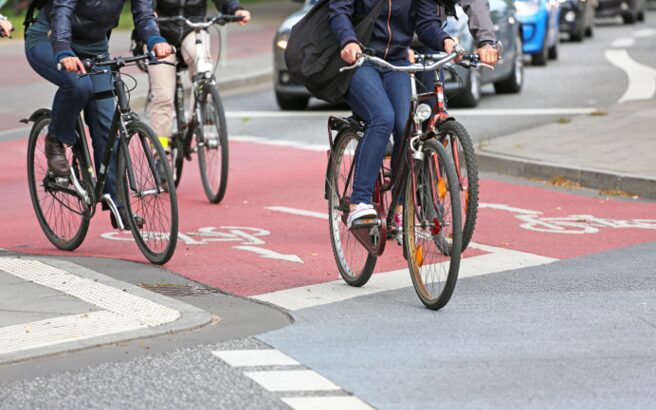This month Margarita Kokkorou and Diva Fanian from our Policy and Public Affairs team reflect on their experiences of being physically active and the role of their built environments when growing up in their respective home countries of Greece and Canada.
The environment in which we live plays a significant role in developing healthy habits, such as being physically active. Despite growing up on opposite ends of the world – in Athens and Toronto and with huge differences in climate, we found that many of our physical activity habits were quite similar, and – much of this was determined by the built environment that shaped us.
In our cities, walking and cycling in the outer-city limits were not always the safest and most accessible options, and with public transport not being the most reliable, we found that most people, including ourselves, depended heavily on cars for daily commutes.
Why is the built environment important?
While being physically active may initially appear as purely an individual choice, our built environment is a big factor that can enable, or prevent us, from being able to simply choose to be more active. This includes factors affecting the individual, such as having access to a bicycle or green spaces, or broader factors, such as the safety of roads and availability of bike lanes.
These features interact with one another to determine the overall environment that allows us to choose to be active. We found in both our experiences in Canada and Greece there was a clear lack of bike lanes and parks where we both lived.
There is a wealth of research which outlines the link between built environment and human behaviour, providing evidence on the impact this can have on creating healthier and active communities. The built environment in relation to promoting physical activity includes the design of schools and workplaces, transportation systems, street safety, and park and green space infrastructure.
The question remains how we can mobilise the development of active built environments? Physical activity policy which targets aspects of the built environment and can drive active behaviour should be advanced.
In fact, there are many policies that work together to make physical activity a more accessible choice. For example, policies that prioritise the development of cycle lanes, bicycle parking and separate footpaths can all encourage people to walk or cycle to their destination instead of relying on a car.
Policies that address the safety of outdoor spaces, such as ensuring street lighting and enforcing speed limits, can support the active use of open and green space, whether as a pedestrian or cyclist. They also have the added bonus of often reducing carbon emissions which helps tackle climate change and promote overall planetary health.
The COVID-19 pandemic has motivated people to rediscover the value of green and open areas, such as parks and gardens and the benefits of active transport, to avoid overcrowding in public transport. It has shone a spotlight on the need for policies promoting active environments.
Cities such as London, Paris, Milan, Brussels and Lisbon have used the pandemic as an opportunity to shift toward active and green built environments, by developing policies that implement temporary or permanent walking and cycling infrastructure.
Perhaps this doesn’t come as a surprise, but the benefits of these policies are already being demonstrated in research; in cities where biking infrastructure was added during the pandemic, cycling had increased up to 48% compared with cities that had not added bike lanes.
The MOVING database
We developed the MOVING policy framework which outlines the different areas that governments need to take action to increase population’s physical activity levels. MOVING highlights the importance of improving the built environment – to ensure there is access to open and green spaces, improve the walking and cycling infrastructure, promote active travel (such as to schools and to work), and implement road safety measures (such as speed limits, street lighting and education campaigns).
The MOVING database provides a repertoire of physical activity policies around the world which address the built environment and enable populations to be more physically active in order to meet the new WHO recommended levels for each age group. It serves as an evidence base for policymakers to use to design and tailor policies to their environment.
Since living in London, we’ve both become more likely to walk to our destinations as well as having started to cycle recreationally – at least more than we ever did in our hometowns!
Notably, the accessibility of city bikes, the clear distinction of bike lanes, and the greater availability of parks have all contributed to this shift. Not much in our approach to physical activity has changed, but the sheer difference in the built environment which nudges us to move a little more, have clearly contributed to a change in physical activity habits. Perhaps Athens and Toronto can follow London’s example and invest more in walking and cycling infrastructure to promote active living.


